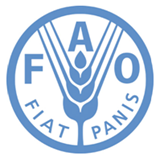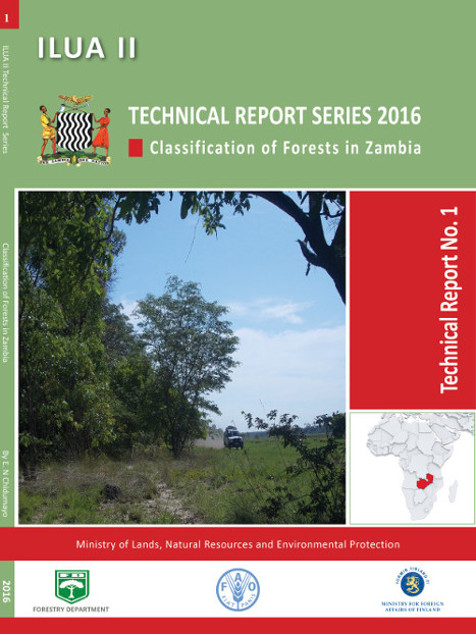 |
1. Classification of Forests in Zambia
The classification of forests is an important aspect of forest management and land-use planning. It defines the forest communities that are available and that are supposed to be conserved or preserved. A good understanding of the forest communities through space and time helps forest managers to describe their forests in detail and generate ideas on how best the forests should be managed.
|
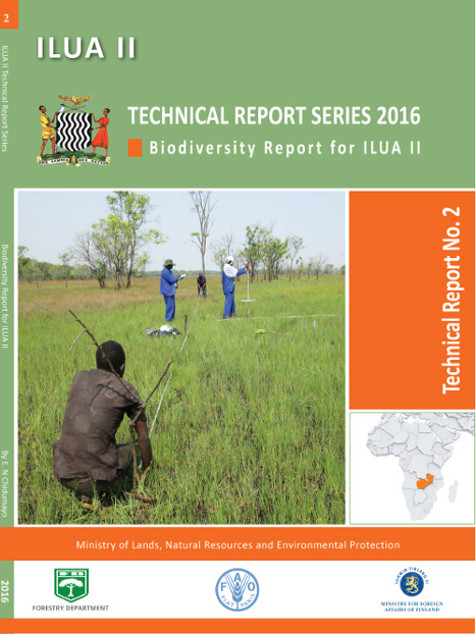 |
2. Biodiversity Report for ILUAII
The majority of terrestrial biodiversity is found in forests and most of that is in the tropics. In Zambia, forests provide livelihood for the majority of people-especially in the rural communities. Therefore, the assessment of forest biodiversity is a priority in forest management. In addition, countries are obliged to report information related to their forest sectors to a variety of international and regional conventions, agreements and bodies. Under the convention on Biological Diversity (CBD), various attempts are being made to harmonize national reporting on biological diversity
|
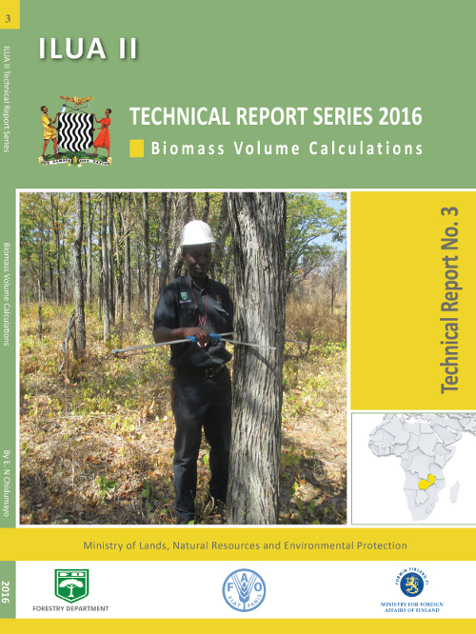 |
3. Biomass Volume Calculations
Forest inventories are used as a starting point for estimating biomass and carbon storage in national forests. Biomass equations are normally developed on the basis of data collected in the forest inventory. The Integrated Land Use Assessment project phas II (ILUA II) is expected to provide the results of forest stocking that are typically considered within the framework of sustainable forest management and carbon accounting purposes
It is for this reason that an assessment of existing models for biomass calculations is important in order to explore and provide options of models that are relevant to the ILUA II purposes.
|
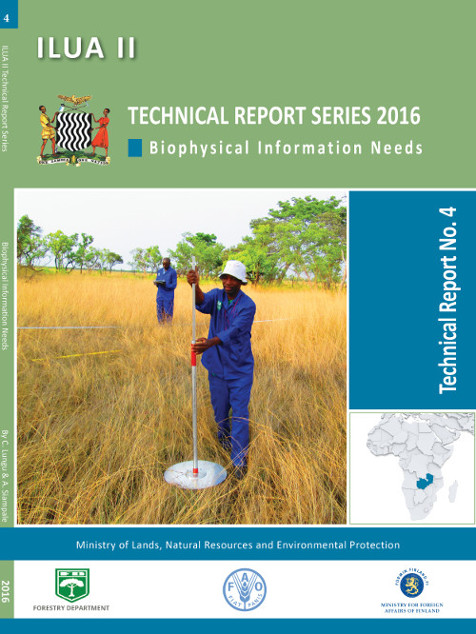 |
4. Biophysical Information needs
The Forestry Sector in Zambia requires reliable, accurate and updated forestry information for strategic planning, policy and management decisions. However, forestry information management in Zambia is still not up to standard due to insufficient institutional capacity for data management. The first Integrated Land Use Assessment (ILUA) which was undertaken between 2005 and 2008 generated forestry information that could only be used for national and international reporting. A follow up ILUA II was commisioned in 2010 and aims at improving the provision of adequate forestry data and its processing for National, Provincial and District level forest policy development as well as international reporting
Considering that data users are wide and diverse, it follows therefore, that data needs are different and of a varied range. Finding out the data needs is the initial point for planning forest inventory and in this regard, ILUAII initiated a Biophysical Information Needs Assessment in order to reveal stakeholders' and organizations' demands for forest data at several levels and scales.
|
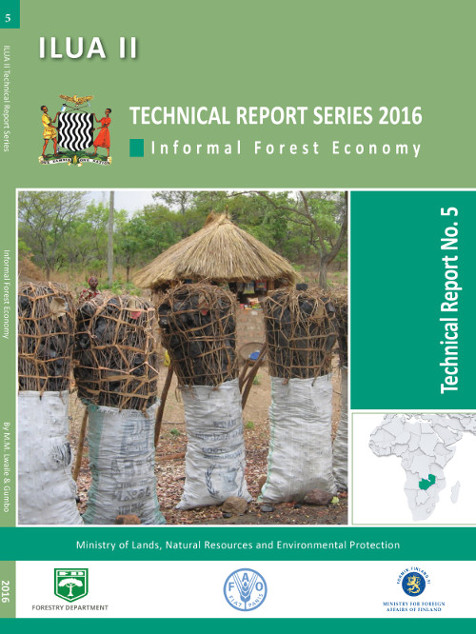 |
5. Informal Forest Economy
Forests in Zambia and many countries in Africa offer numerous benefits to the rural communities. Such benefits include consumptive resources, spiritual and aesthetic needs, employment and ecological services such as carbon sequestration and water provision. However, in many situations, access to such benefits is neither uniform nor equitable both between and within communities. the social functions of forests are often more difficult to measure and can vary considerably among countries, depending on their level of development and traditions. In Zambia, the contributionof forests to the economy is undervalued due to the fact that , much of the informal forest activities are not captured in the official statistics.
ILUA II commisioned a study of the Informal Forest Economy in order to identify parameters that would help bring out the forest livelihood and economy aspects.
|
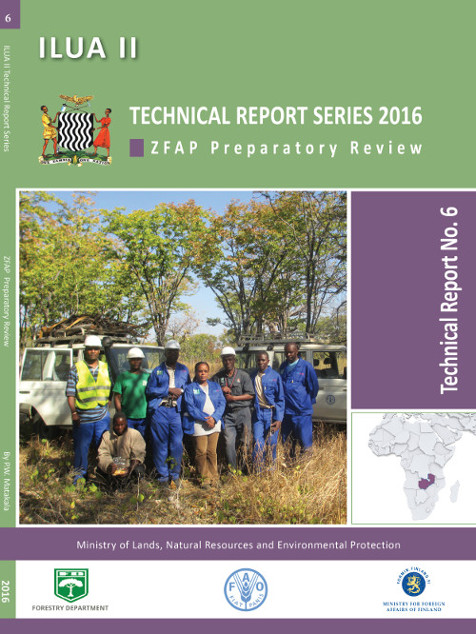 |
6. ZFAP Preparatory Review
The Zambia Forestry Action Plan (ZFAP) was launched in 1996 as a key master plan for the forestry sector in Zambia for a period of 20 years. During the years from 1996 to 1998, the ZFAP objectives were progressively developed into the Zambia National Forestry Policy of 1998 and subsequently the Forests Act No 7 of 1999. Although the Forests Act was not implemented, a number of programmes have been implemented from the ZFAP, including the Integrated Land Use Programme.
The Integrated Land Use Assessment Project Phase II is a direct outcome of the ZFAP programme, namely, planning, monitoring and evaluation which has as one of its outputs a strengthened statistical forest database at the Forestry Department. Given the number of emerging issues that have emanated in the forestry sector, including issues of climate change and REDD+ which ILUA II is expected to address, it became necessary to commission a review of the ZFAP.
|

